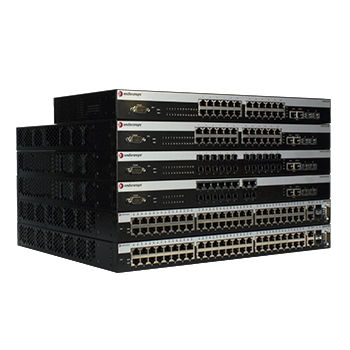
Extreme Networks
NX 9000 License Certificate for 8 Controllers or Access Points
List Price: $0.00
(Request quote for discounted pricing)
Special Order
NX 9000 NOC Controller – Central Control and Remote Troubleshooting for 10,000 Access Points
As wireless applications are needed at more and more sites in your organization, how can you scale your wireless network efficiently while making sure you can meet the growing demands that will be placed on it? Using our WiNG 5 WLAN architecture and our NX 9000 NOC Controller, you can minimize your capital expenditure while making deployment, control and remote troubleshooting easier through the use of a single controller interface.
The NX 9000 NOC Controller lets you centrally control networks of 1,000 to 10,000 WLAN access points that are geographically dispersed over many small or medium sized enterprise locations. Clusters of up to 24 WiNG 5 access points intelligently handle traffic flows, QoS, mobility and security at the remote distributed locations while the NX 9000 provides a single point for configuration, policy setting and remote troubleshooting. Hotspot configuration, security policy management, statistics aggregation and DHCP/Radius/FTP services are all done by one powerful NOC controller. This efficient WLAN architecture makes controlling the network easier and reduces the hardware OPEX needed to support large networks.
Unique Value
The NX 9000 takes advantage of the WiNG 5 distributed intelligence to allow you high scalability. It provides zero-touch auto configuration for access points being deployed across multiple distributed locations and manages firmware updates via local access points acting as RF domain managers so that WAN traffic is minimized. Because the WiNG 5 architecture handles direct forwarding, QoS and security at the access points, using one controller doesn’t create a bottleneck in the network as would be expected in traditional hub-and-spoke architectures. The NX 9000 supports 1+1 failover for high availability with no additional licensing fees for the redundant system.



